Audi A6 e-tron: how Audi wants to conquer the electric business class
Three years after the premiere of the A6 e-tron concept at the 2021 Shanghai Motor Show, the German carmaker has unveiled the production model. Following the presentation of the Audi Q6 e-tron SUV model, there are no big surprises in terms of technology – both models are based on the Premium Platform Electric, or PPE for short. However, the A6 e-tron is the first ‘flat-floor concept’ on the platform, as the Q6 e-tron and the Porsche Macan unveiled in January are SUVs, i.e.’ high-floor concepts.’
However, the flatter design does little to change the technical data. It uses the battery developed for the PPE with an energy content of 100 kWh gross or 94.9 kWh net. The latter can be charged with up to 270 kW at its peak, which should result in charging times of 21 minutes for the usual window of ten to 80 per cent. In other words, the A6 e-tron should be able to charge up to 310 kilometres in ten minutes. That is made possible by predictive thermal management of the battery; we described this in our background article on the PPE. Plug&Charge and ‘bank charging’ at 400-volt charging stations, as introduced in the Macan, are also available in the A6 e-tron. An 11-kW charger is installed for AC charging, with an optional 22-kW variant to follow later.
At the market launch, Audi combines the battery with two drive systems. The A6 e-tron Performance will initially be the base model with a 270 kW rear-wheel drive – a permanently excited synchronous machine that Audi manufactures at its plant in Györ, Hungary. The 370 kW S6 e-tron is an all-wheel drive model in which the PSM at the rear is combined with an asynchronous machine on the front axle. Audi states that further models with rear-wheel and all-wheel drive will follow at a later date “depending on the market.” As with the Q6 e-tron, a smaller battery with ten instead of twelve modules and an energy content of 83 kWh is assumed.
It is not yet known how much this base model of the A6 e-tron (presumably without the ‘Performance’ suffix) will cost.
| A6 e-tron Performance | S6 e-tron quattro | |
|---|---|---|
| Drive | RWD | AWD |
| Power | 270 kW | 380 kW |
| Acceleration | 5.4 s | 3.9 s |
| Top speed | 210 kph | 240 kph |
| WLTP range | 750/720 km | 670/640 km |
| Battery | 100 kWh | 100 kWh |
| Charing capacity DC | 270 kW | 270 kW |
| Charging time DC 10-80% | 21 min | 21 min |
With the large battery, the ‘Performance’ rear-wheel drive model should have a range of up to 750 kilometres according to WLTP, while Audi specifies 720 kilometres for the A6 Avant e-tron Performance. For the sporty S all-wheel drive, the figures are 670 and 640 kilometres, respectively, according to WLTP. By way of comparison, the Q6 e-tron Performance (with 240 kW rear-wheel drive) has a maximum range of 641 kilometres, while the 380 kW SQ6 e-tron quattro should drive up to 598 kilometres between charges.
The difference in this case is not a few kilowatts of power, but the bodywork. During the world premiere, Audi emphasised that aerodynamics is “a key component of the company’s long success story.” For the saloon (now called the Sportback in the style of the four-door coupés), Audi specifies a drag coefficient of 0.21; for the Avant, it should be 0.24. In terms of aerodynamics, the Sportback is said to be nothing less than “the best Audi of all time and the best vehicle in the entire VW Group.”
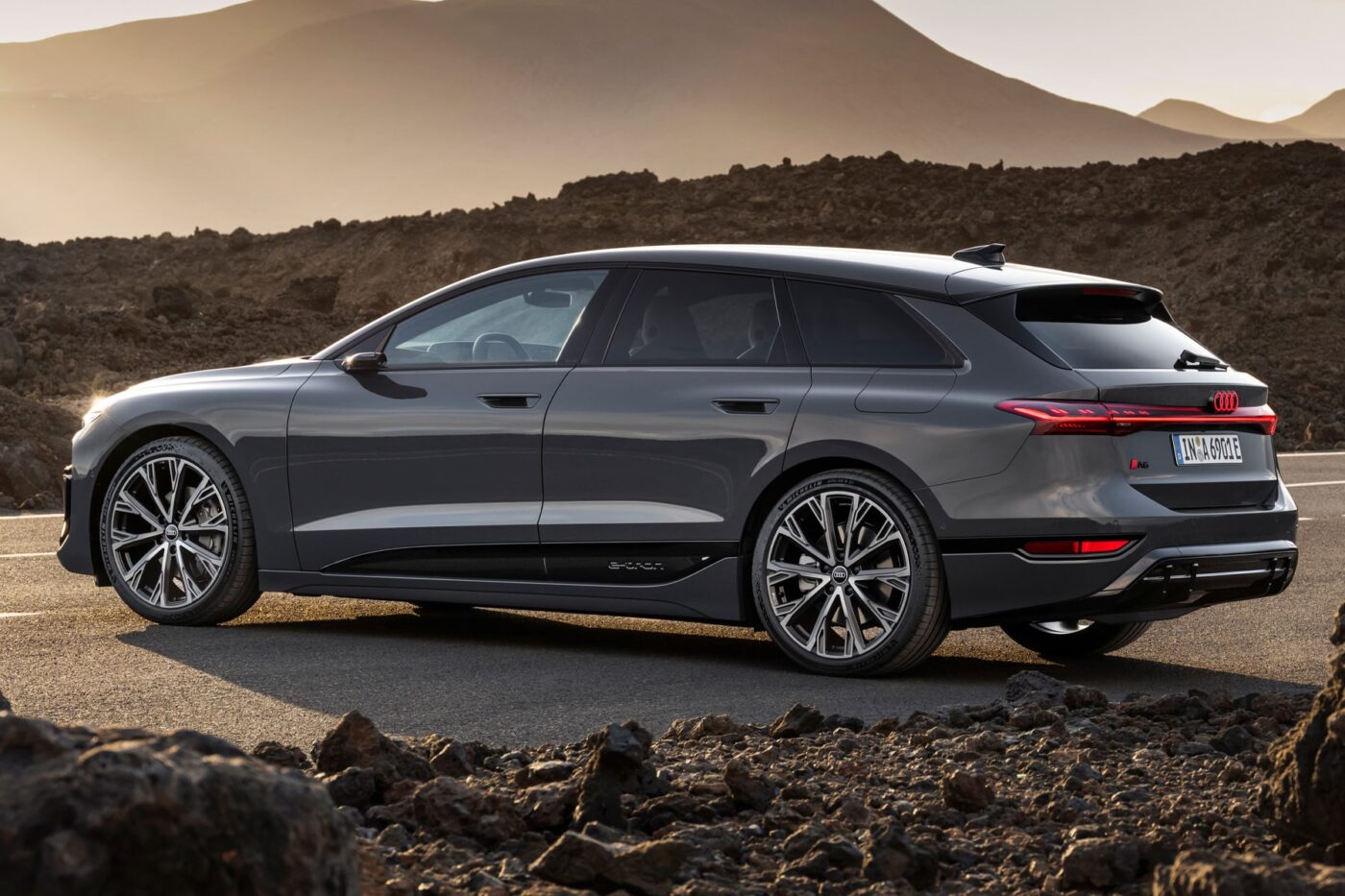
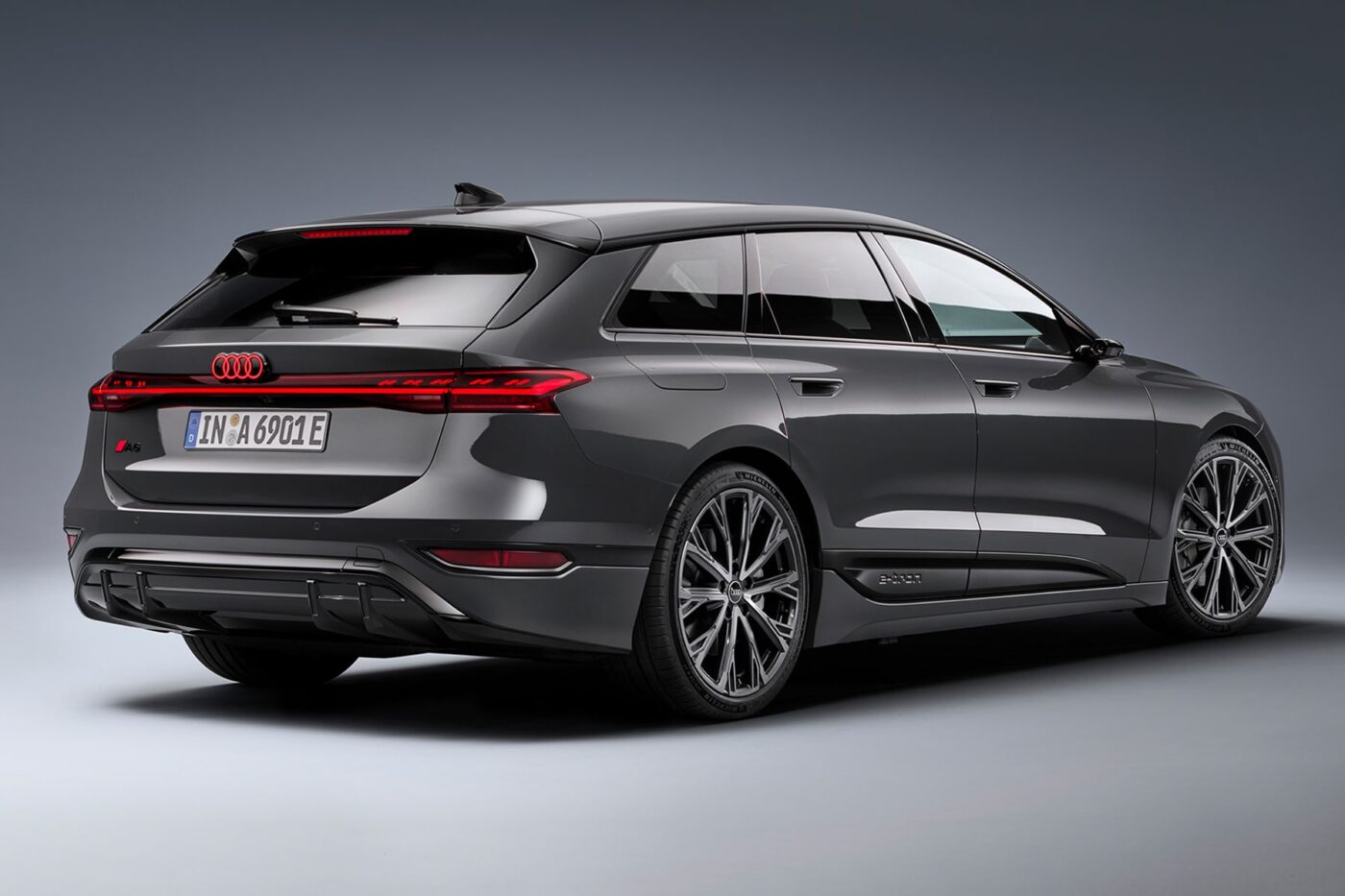
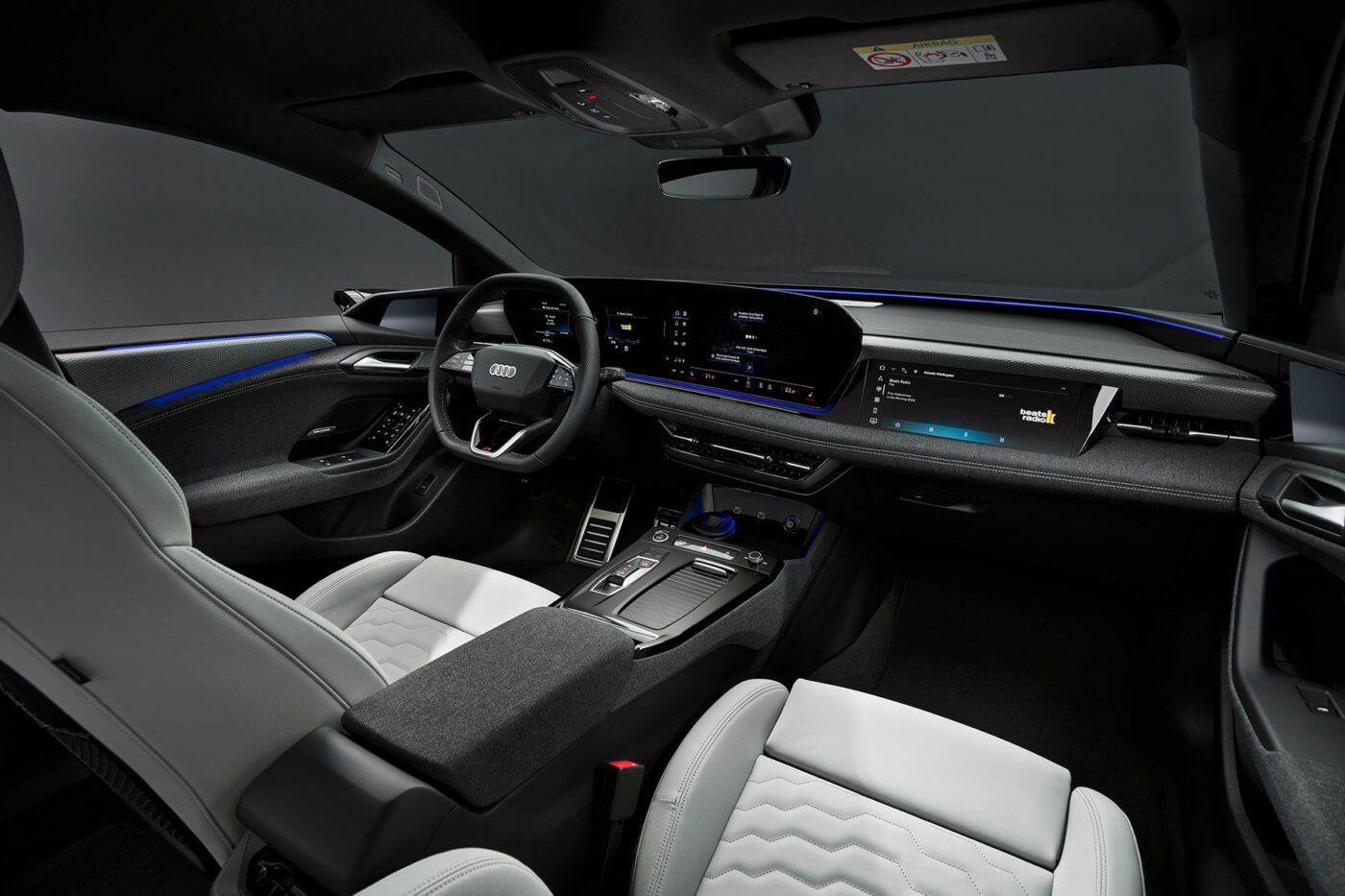
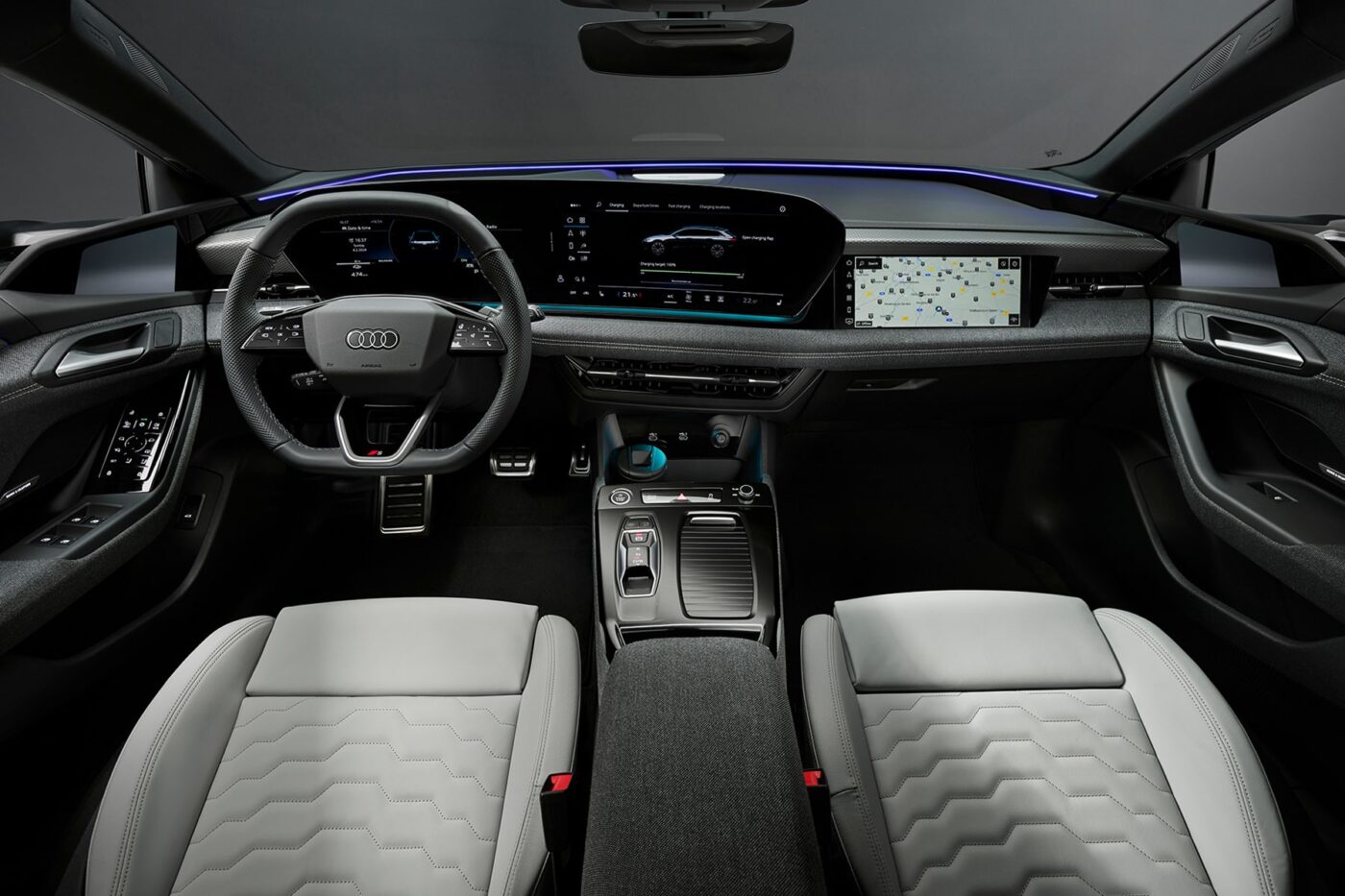
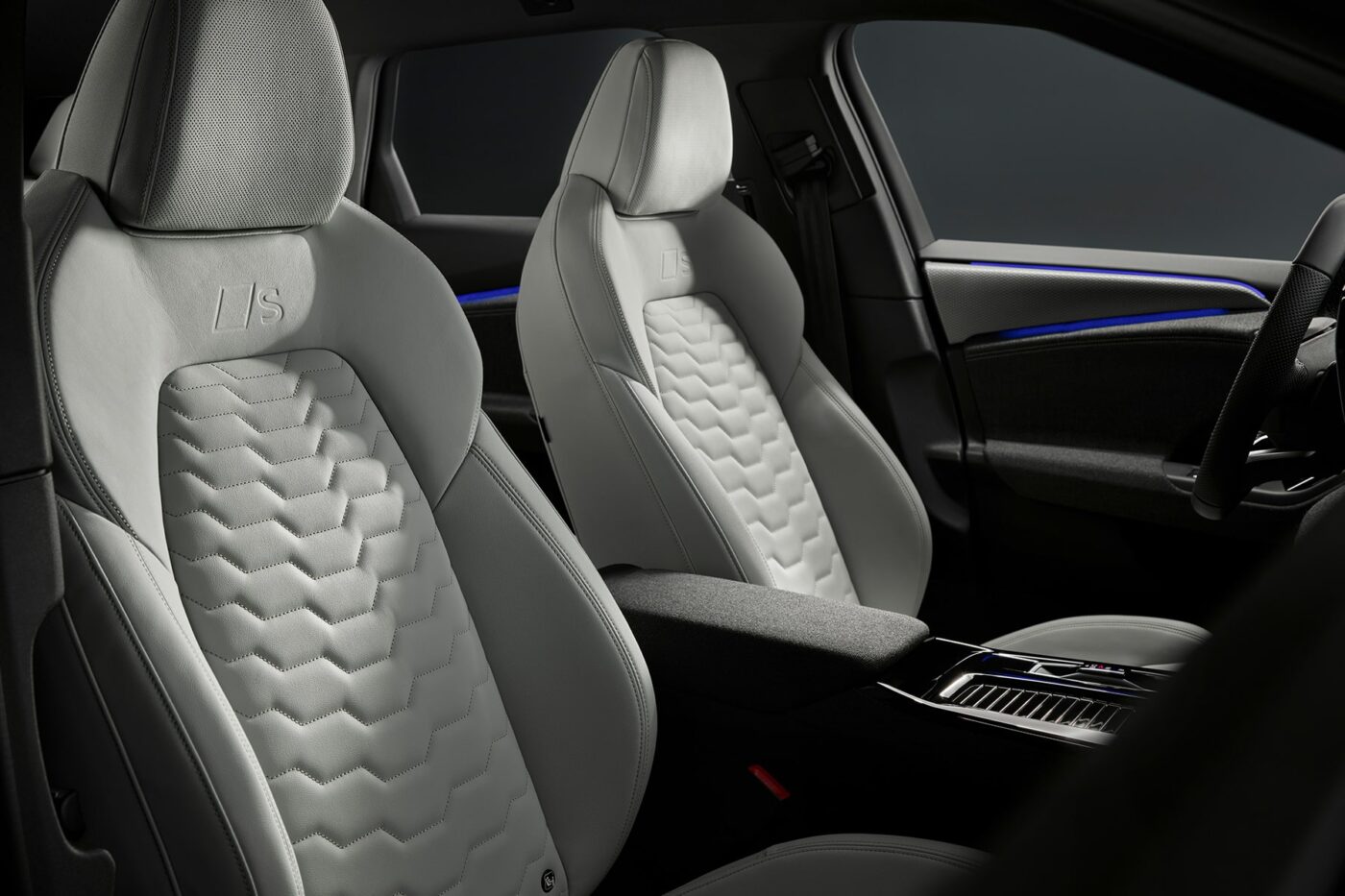
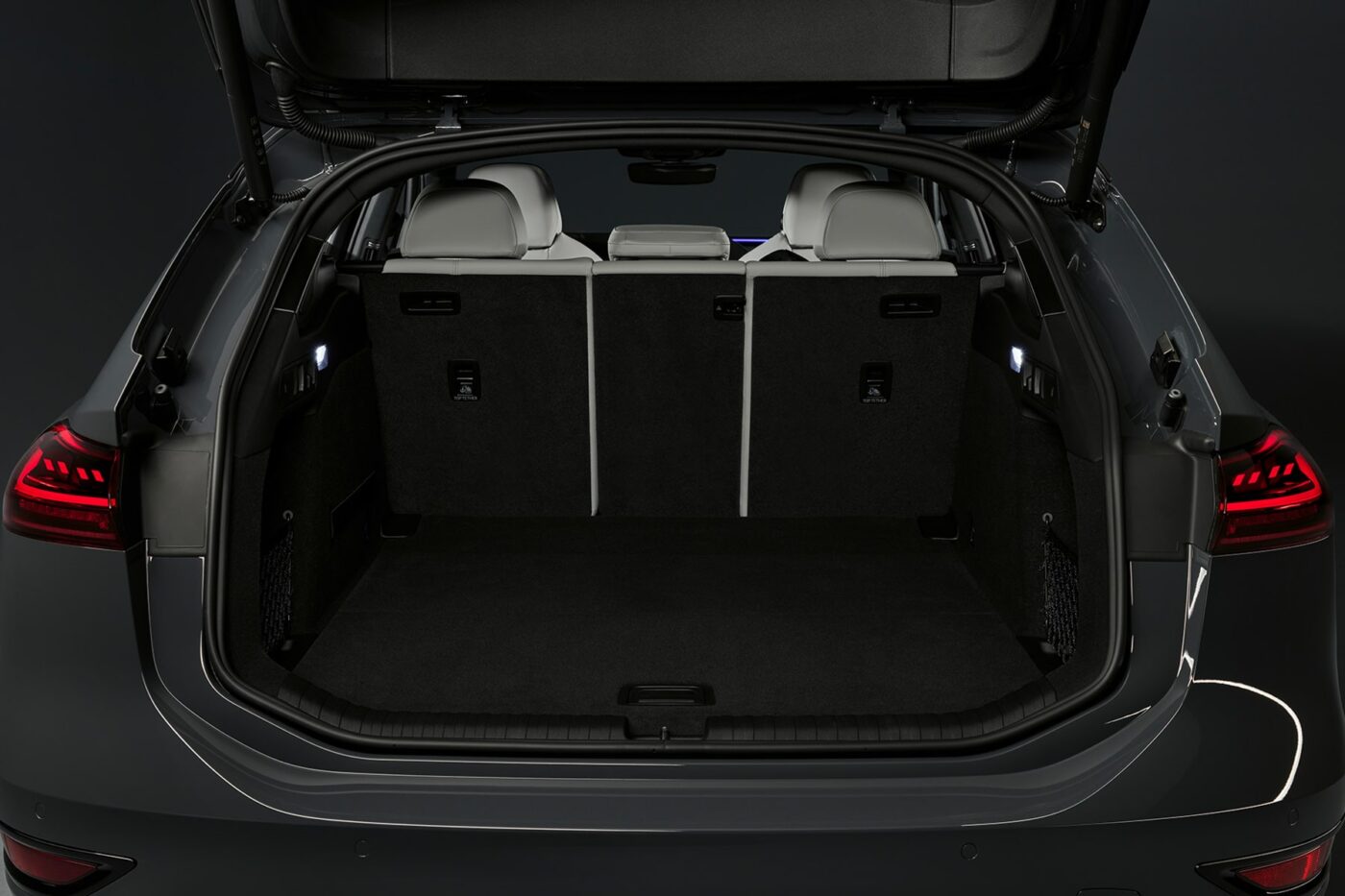
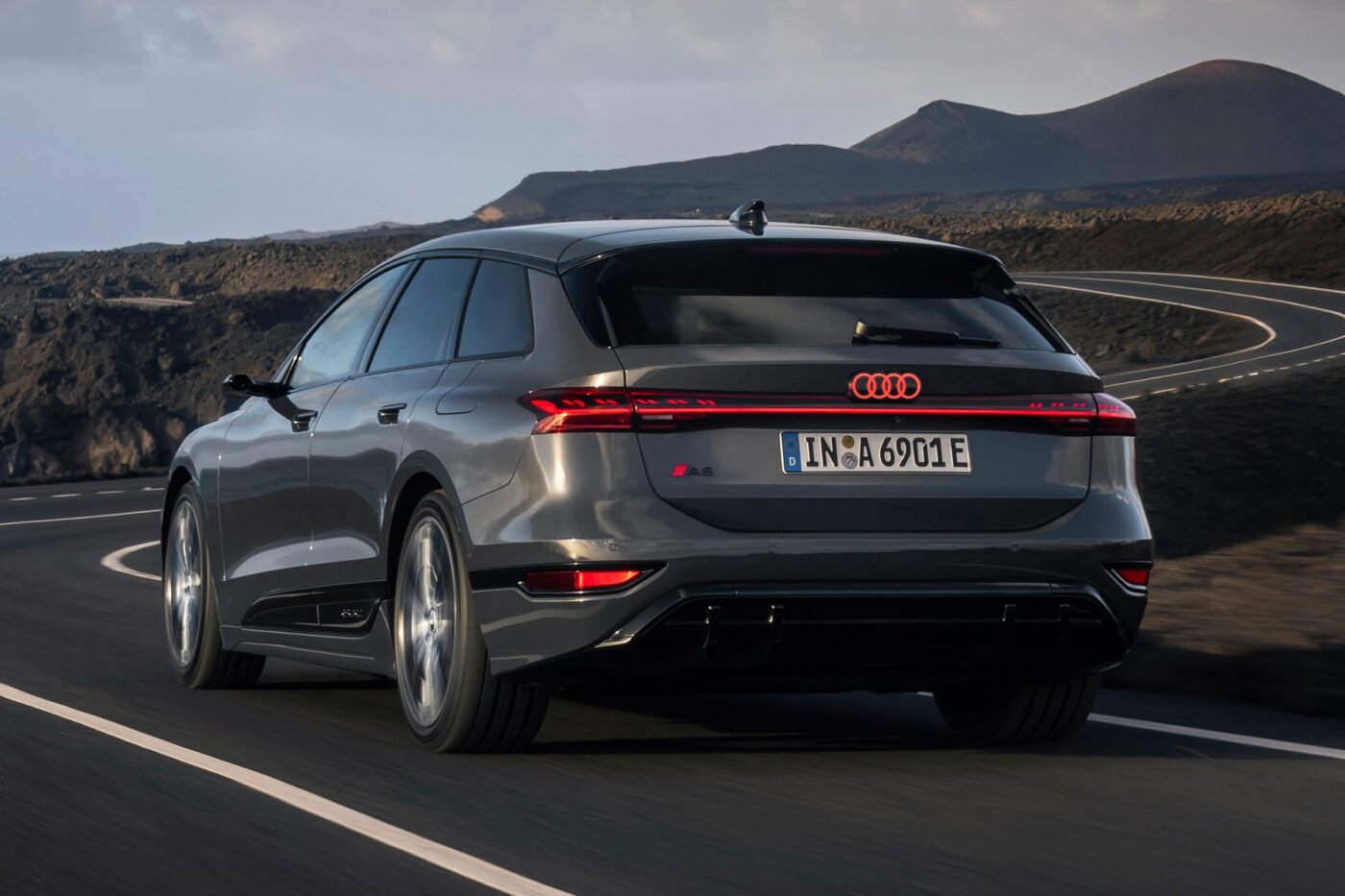
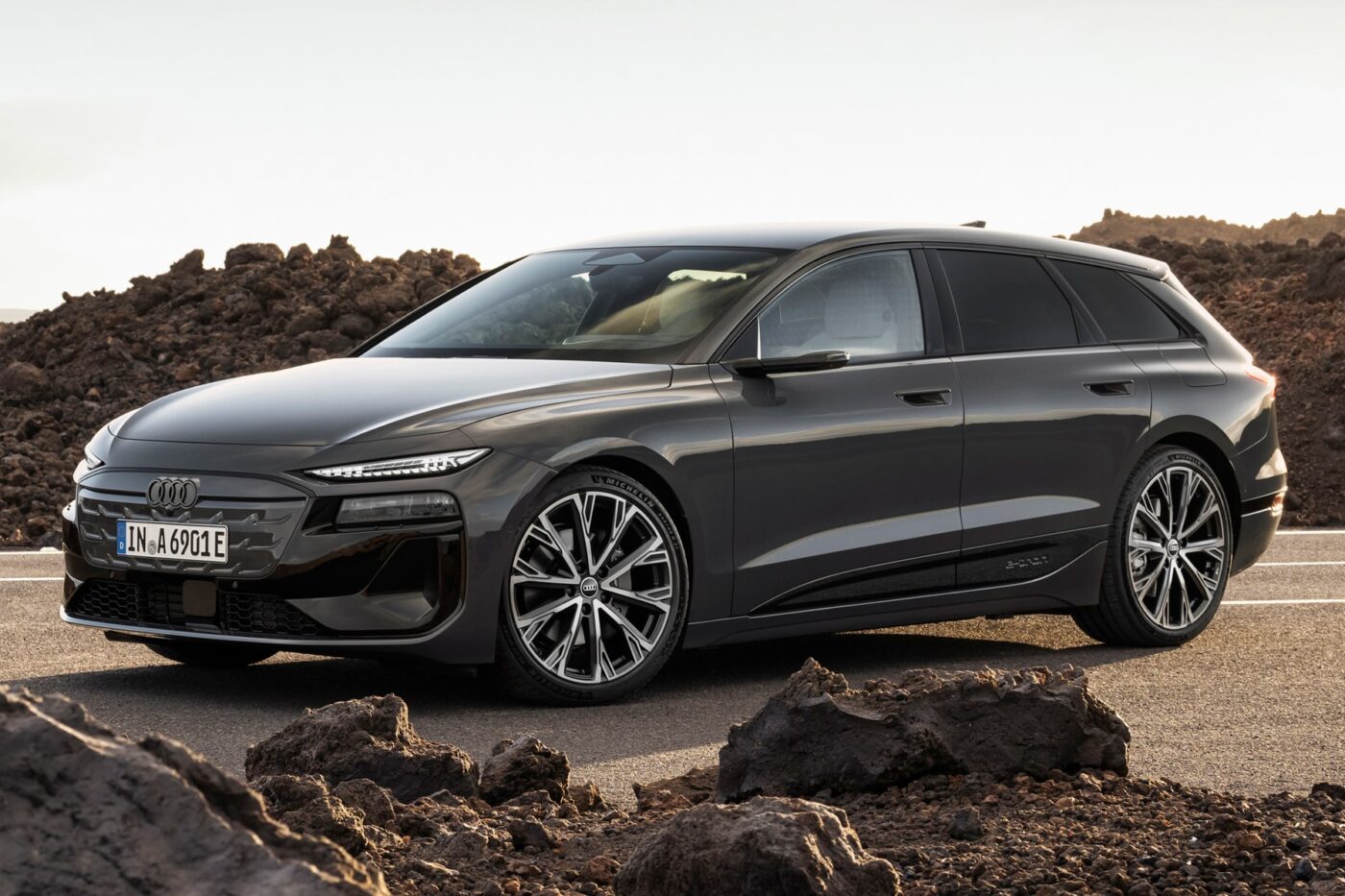
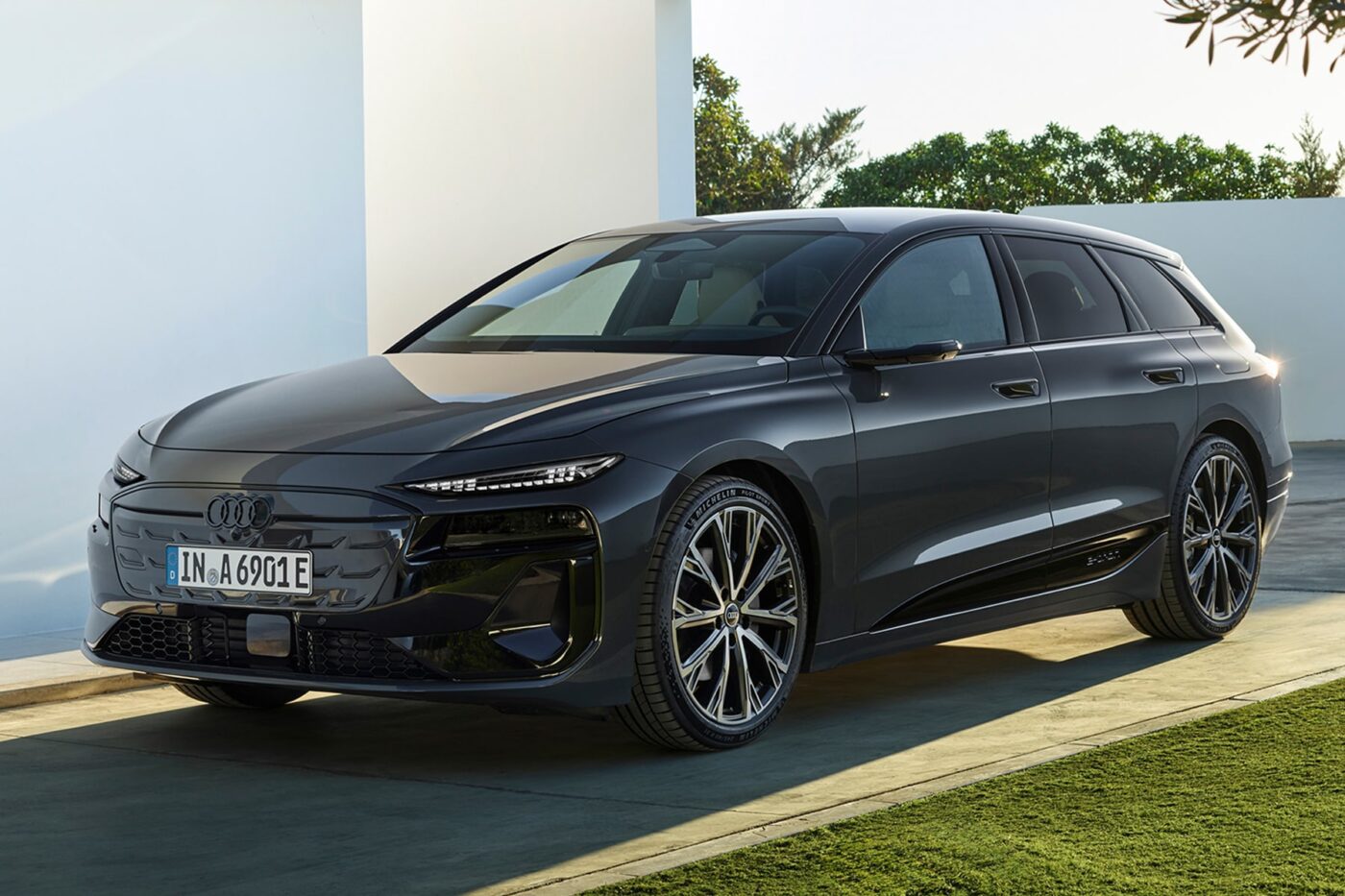
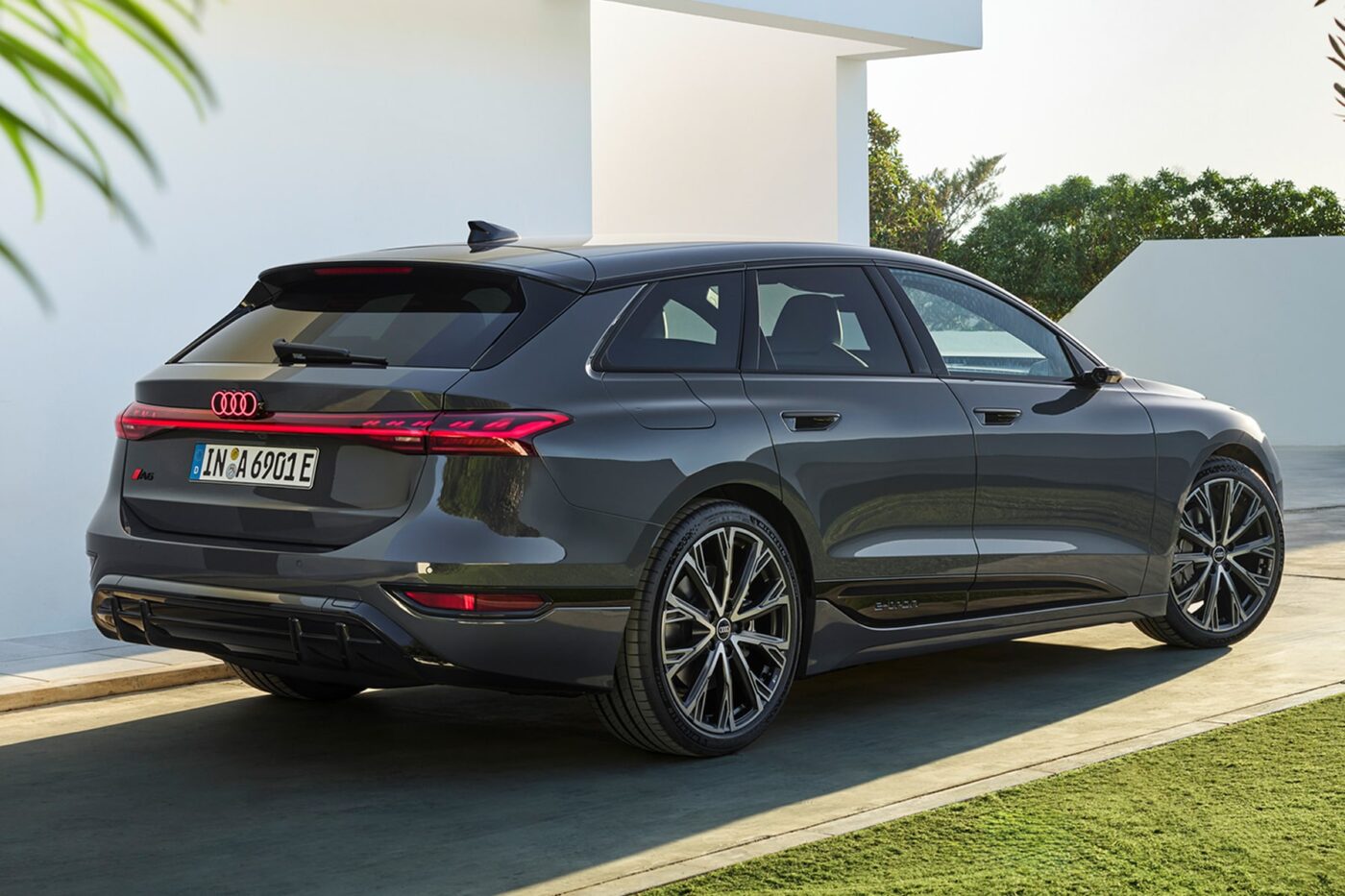
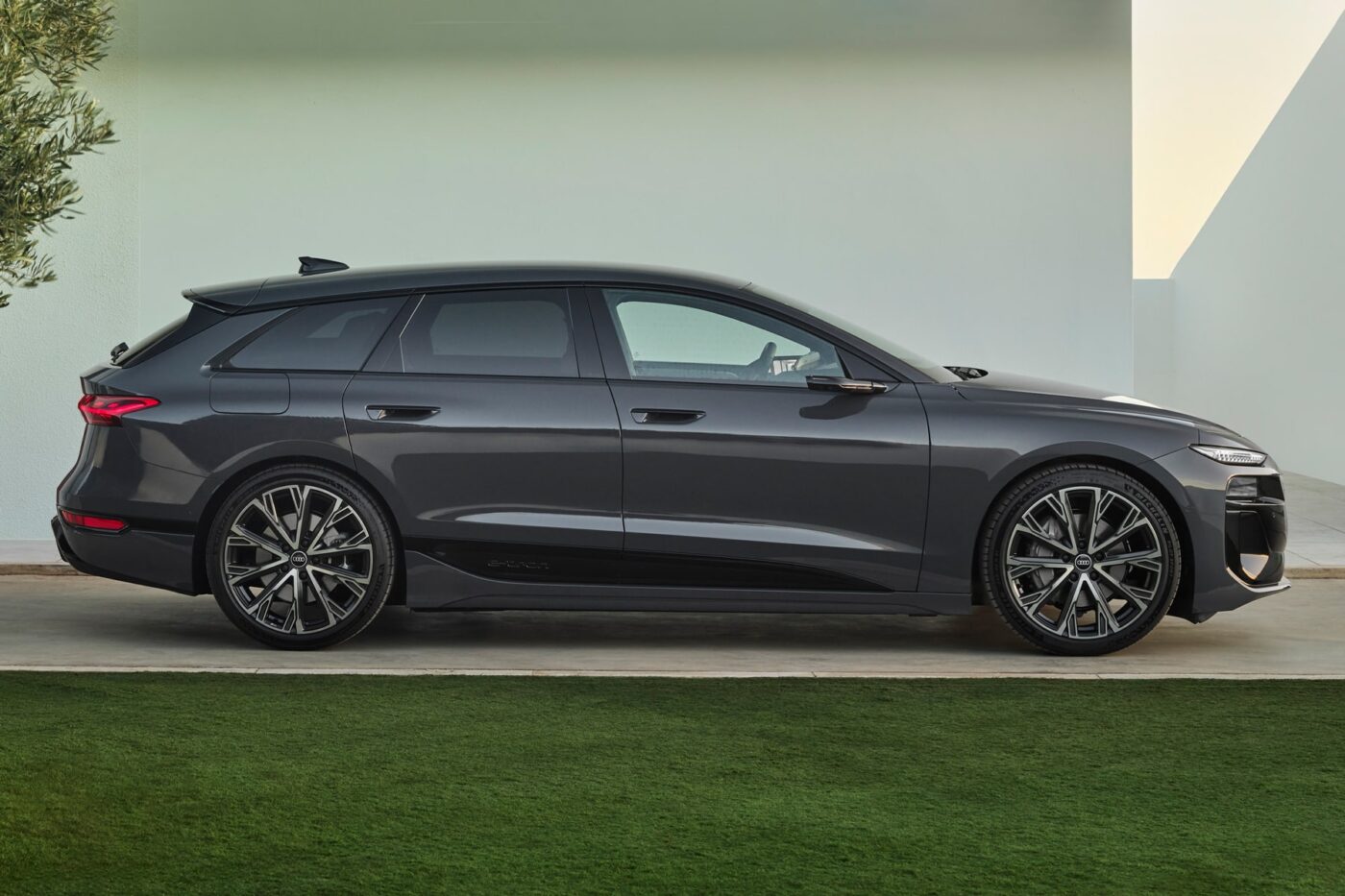
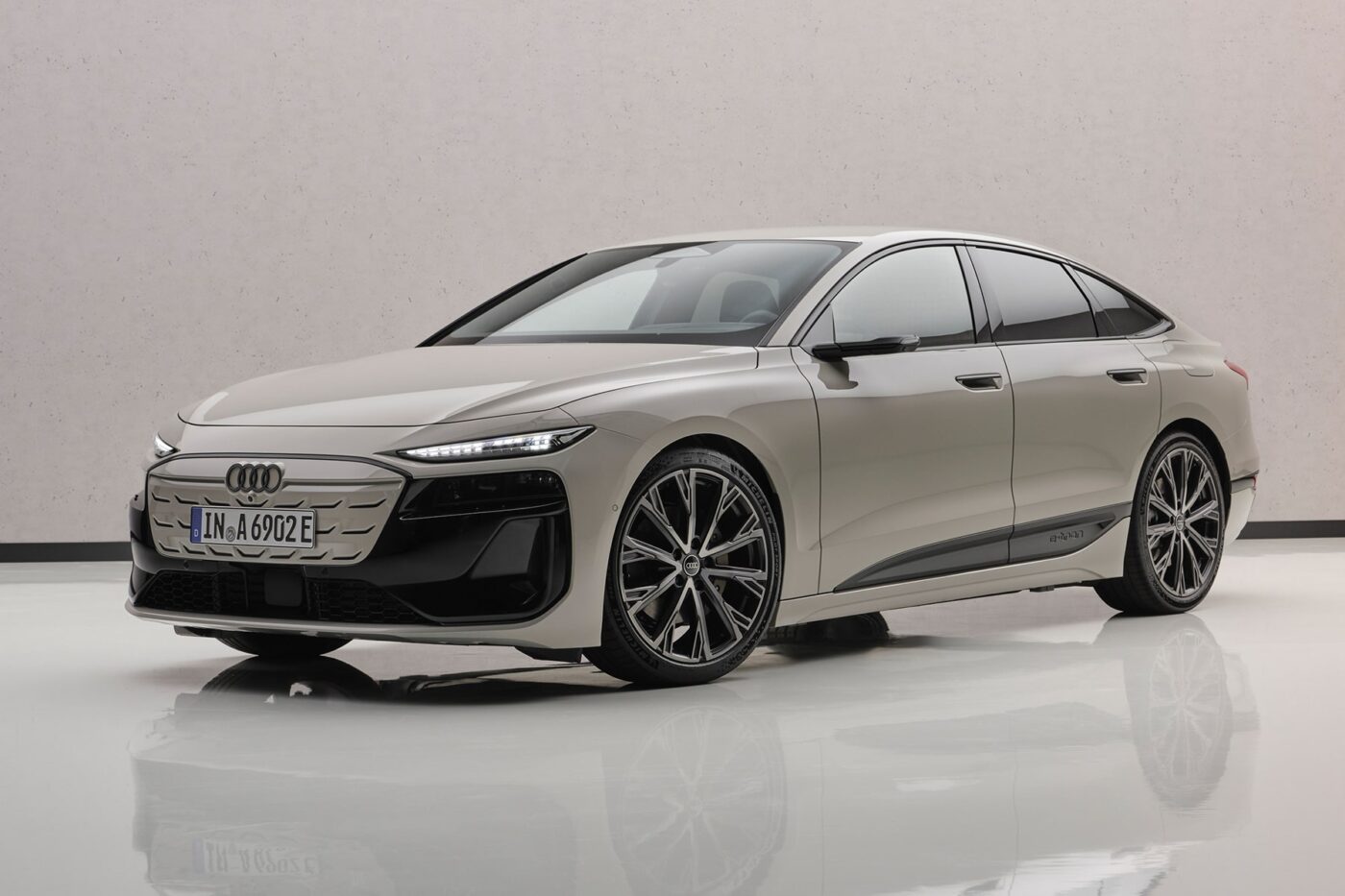
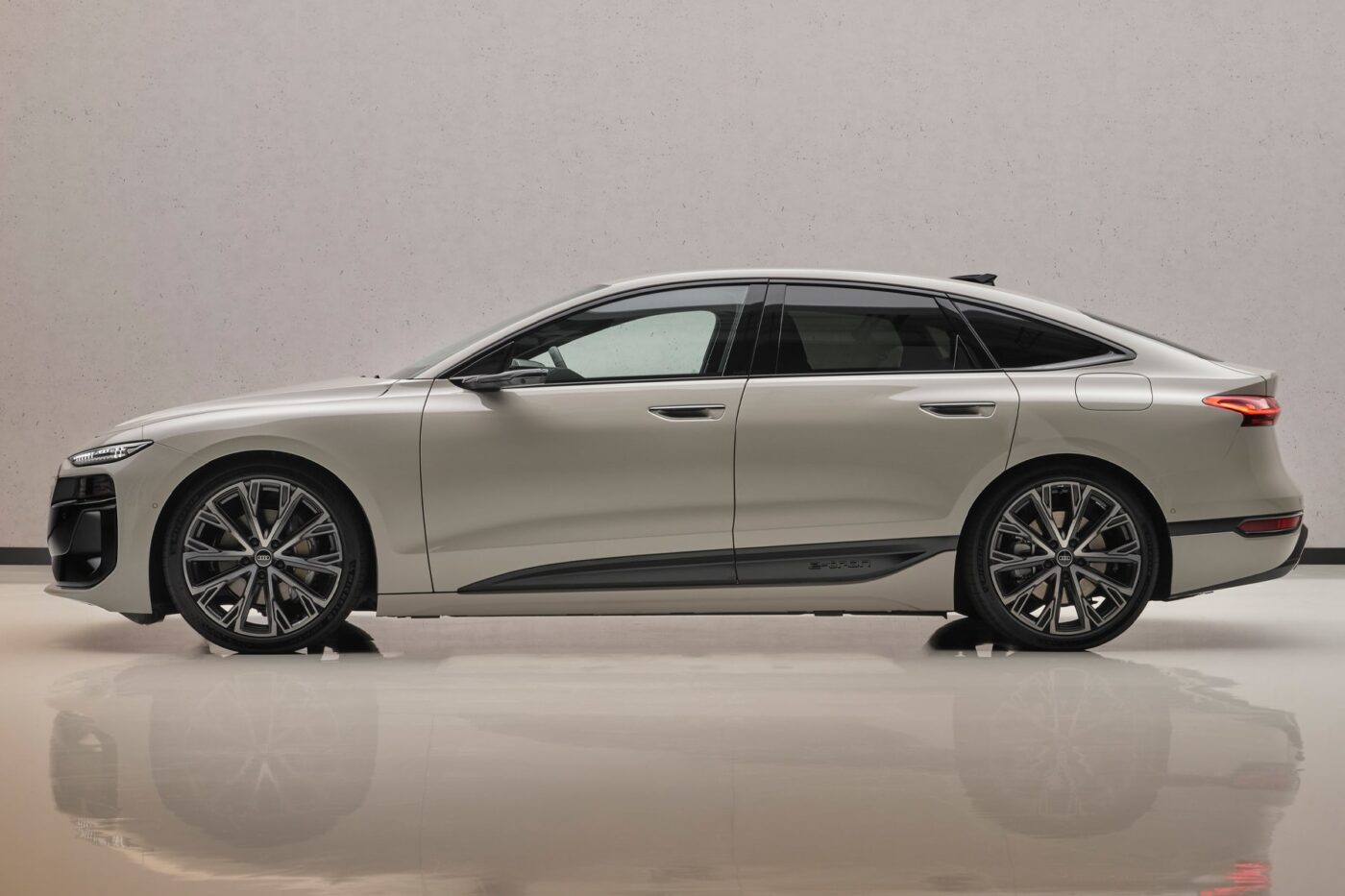
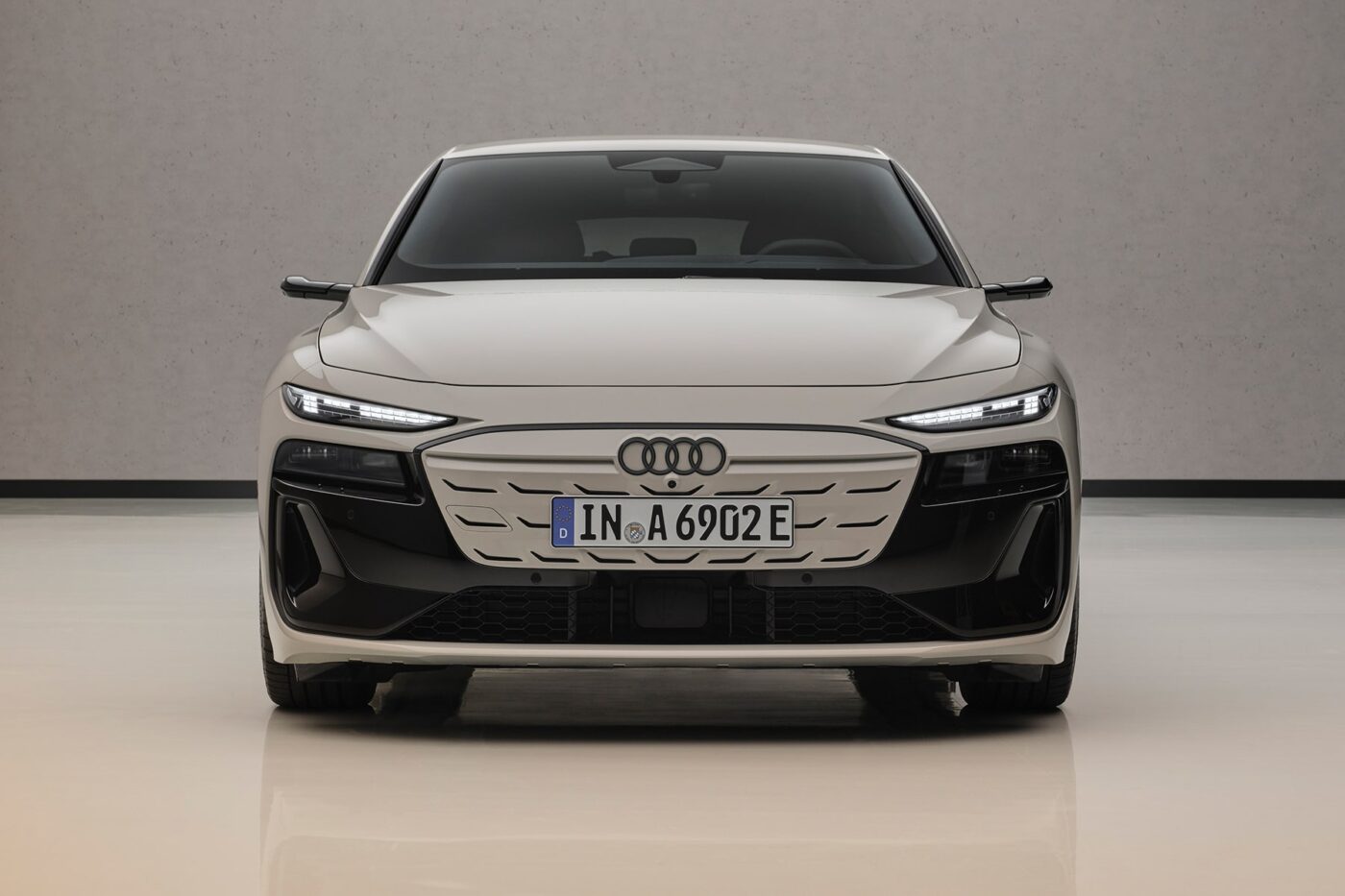
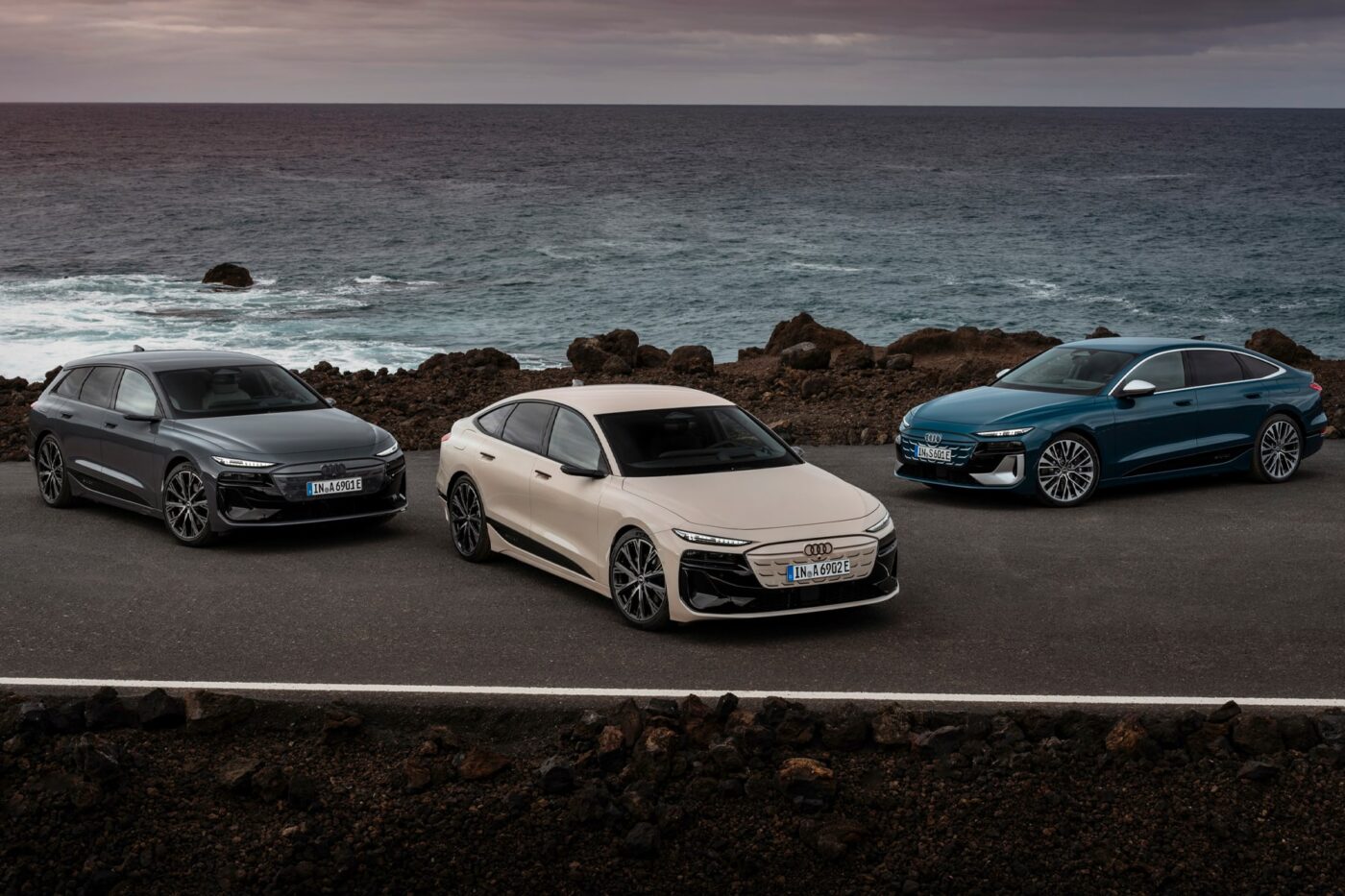
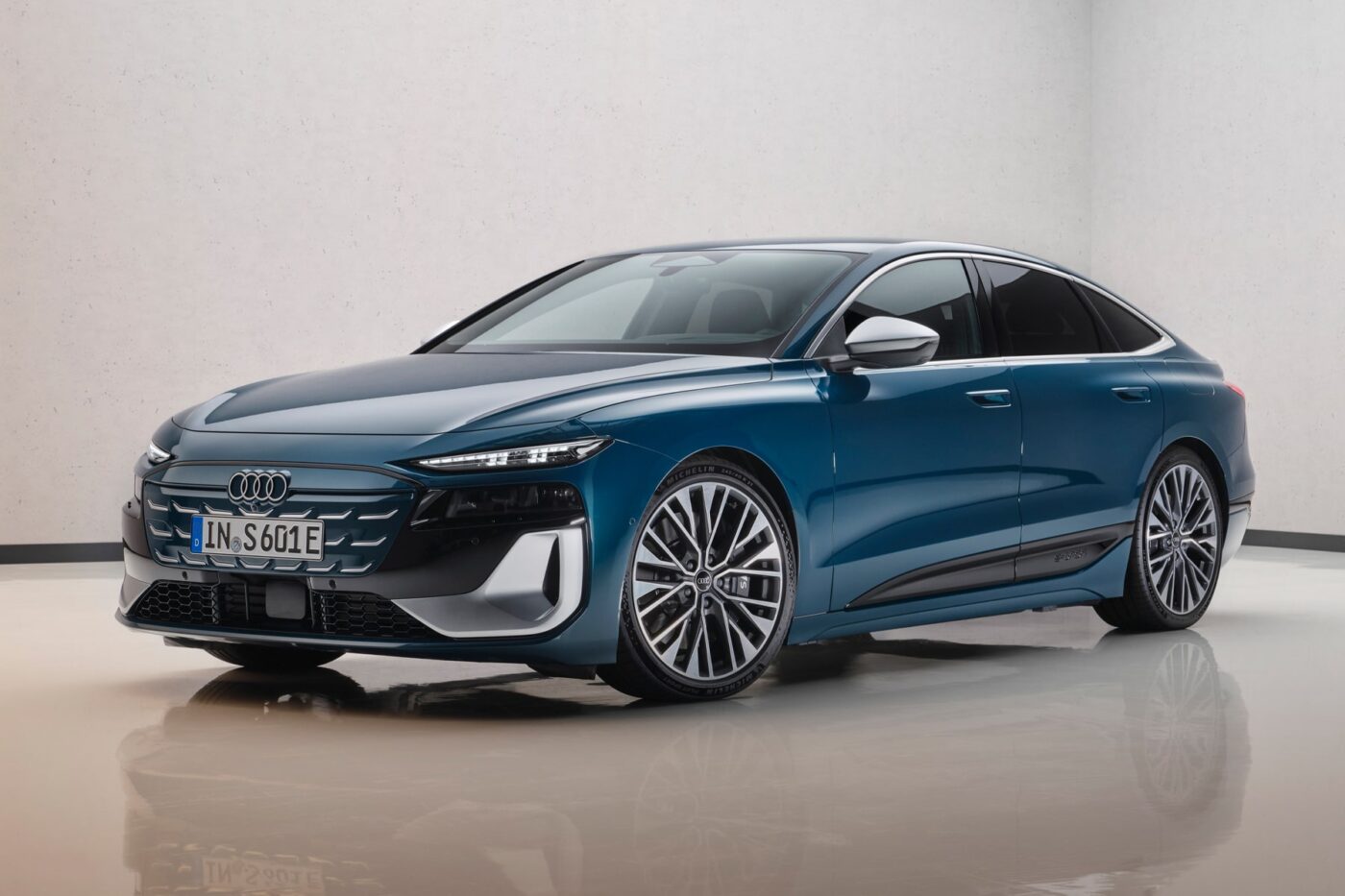
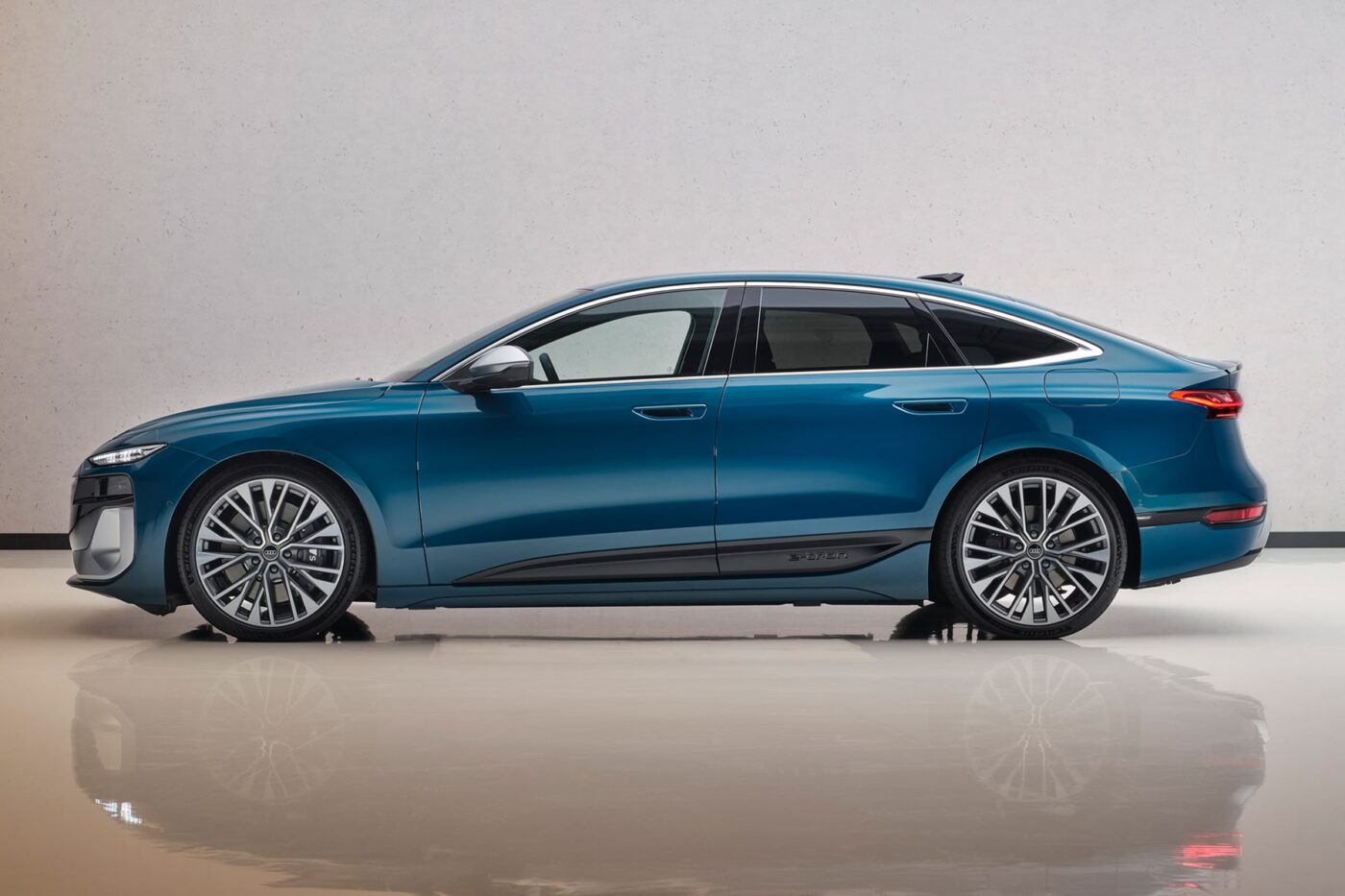
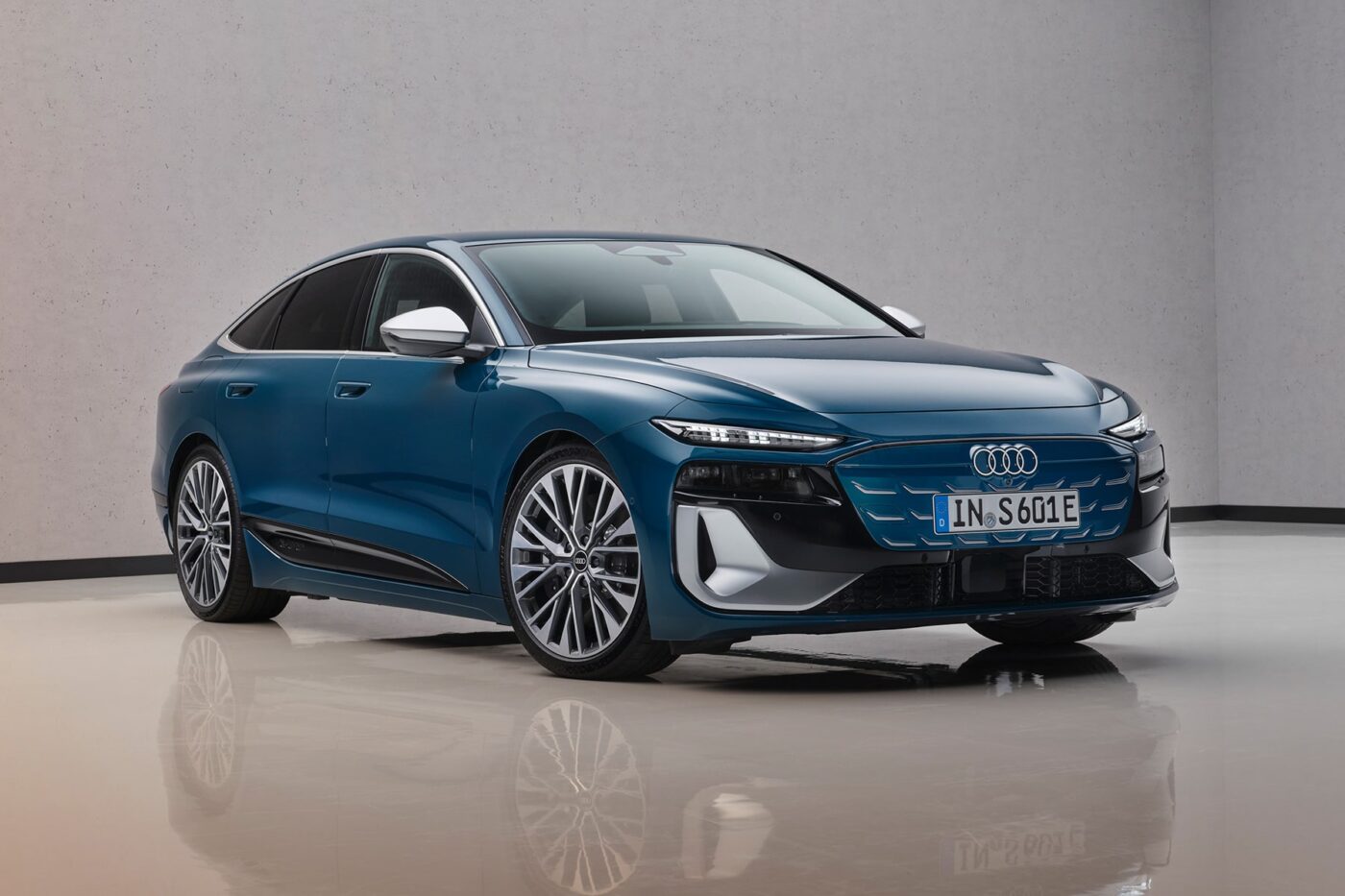
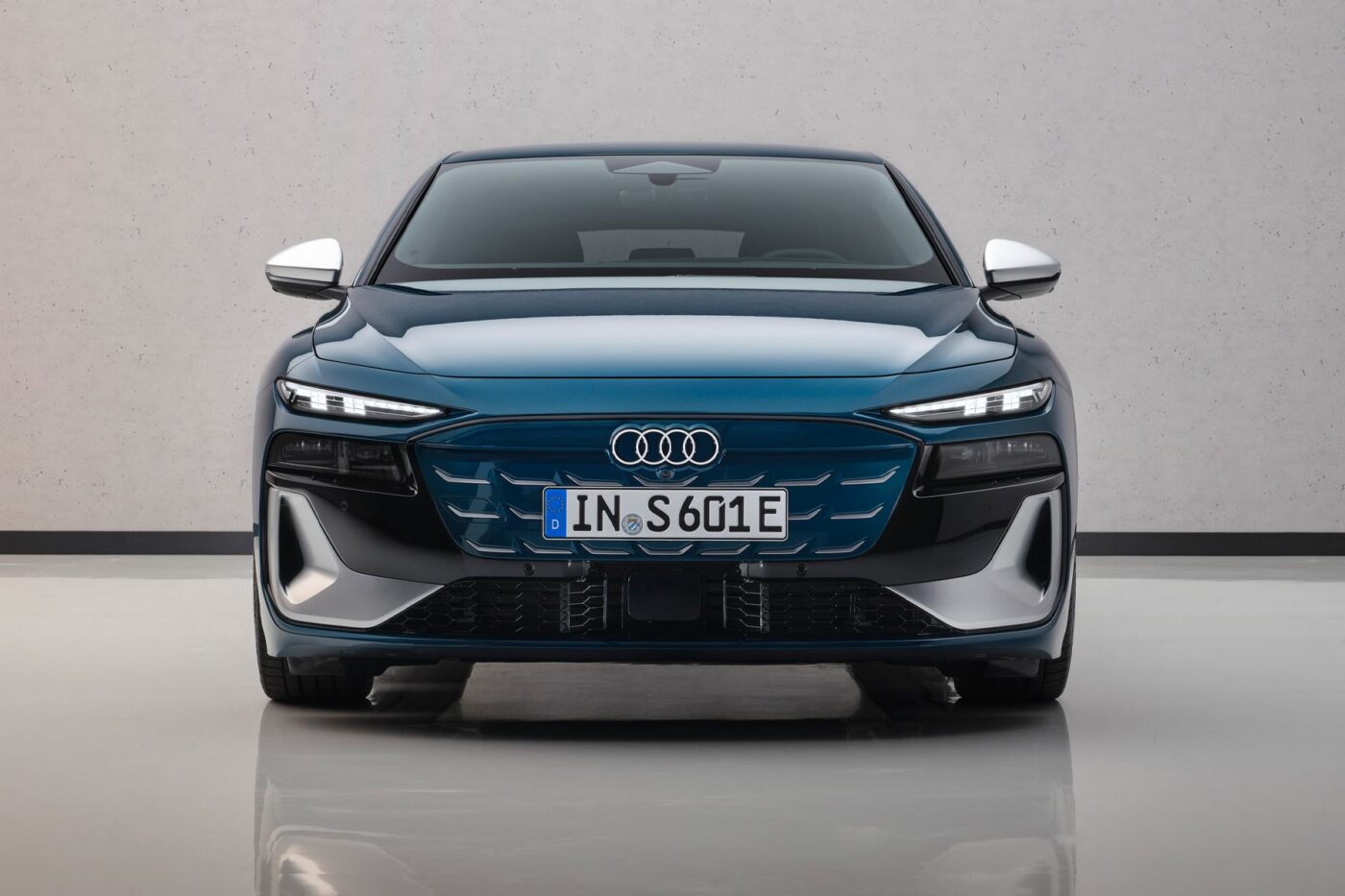
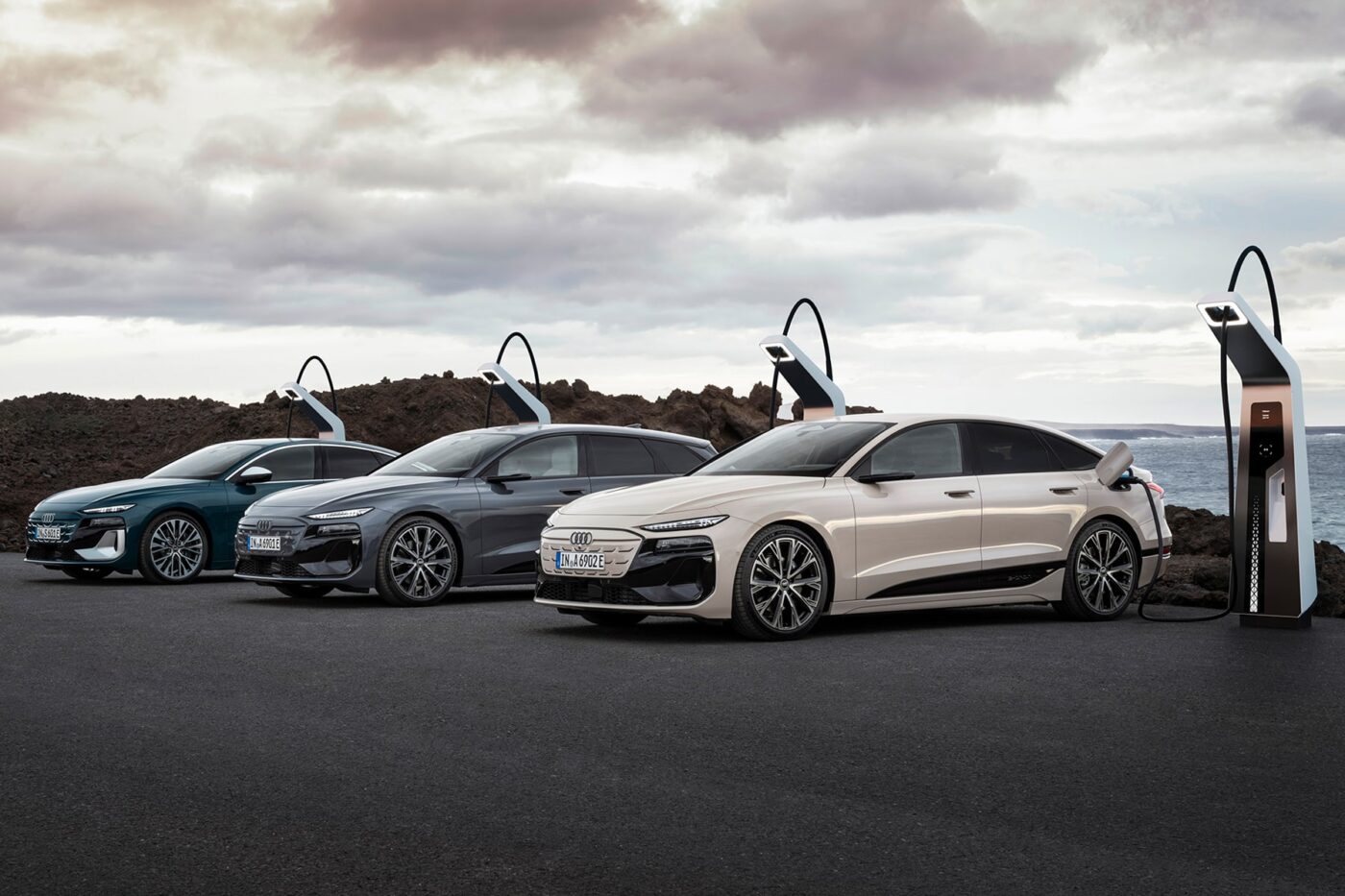
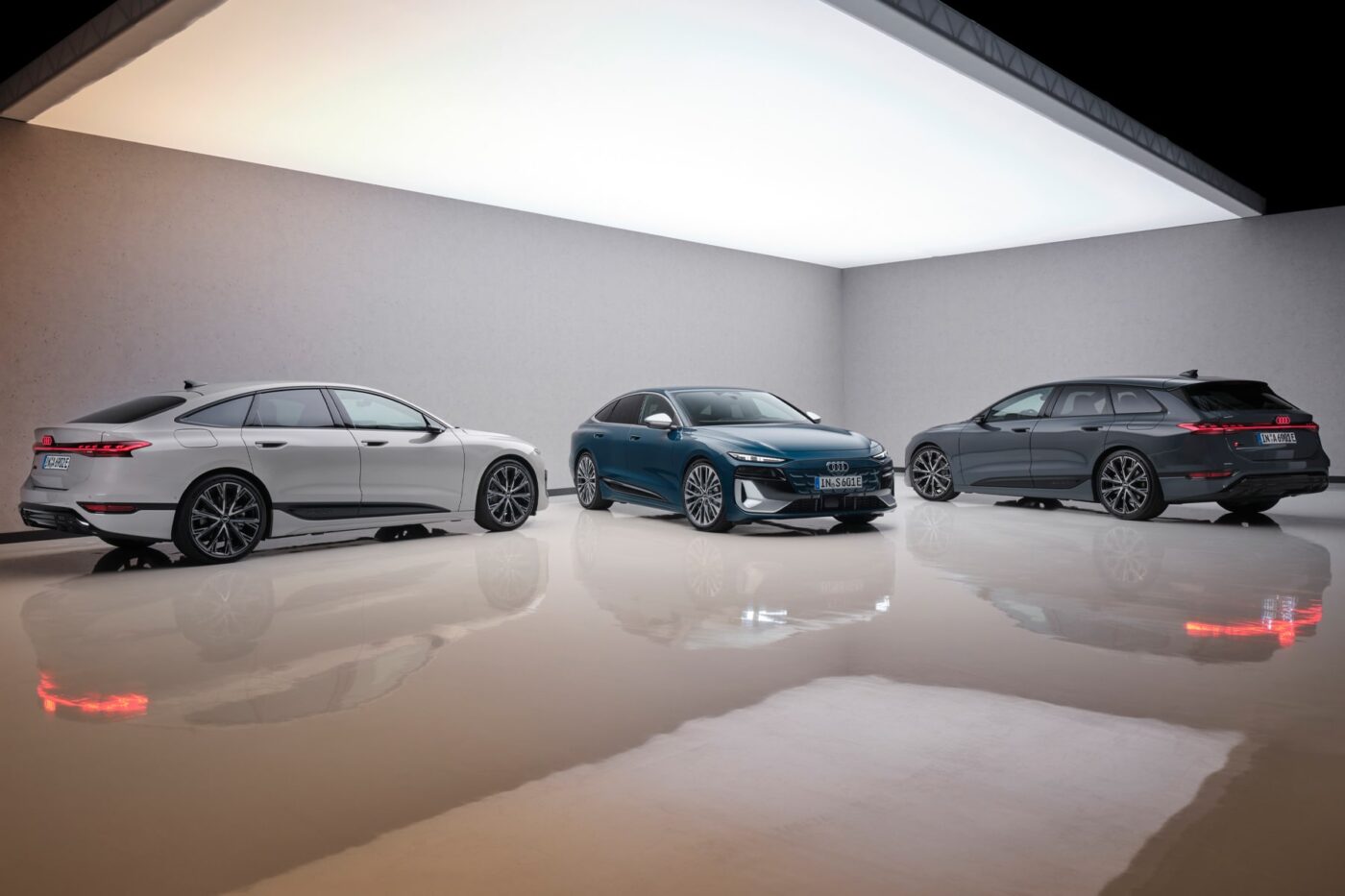
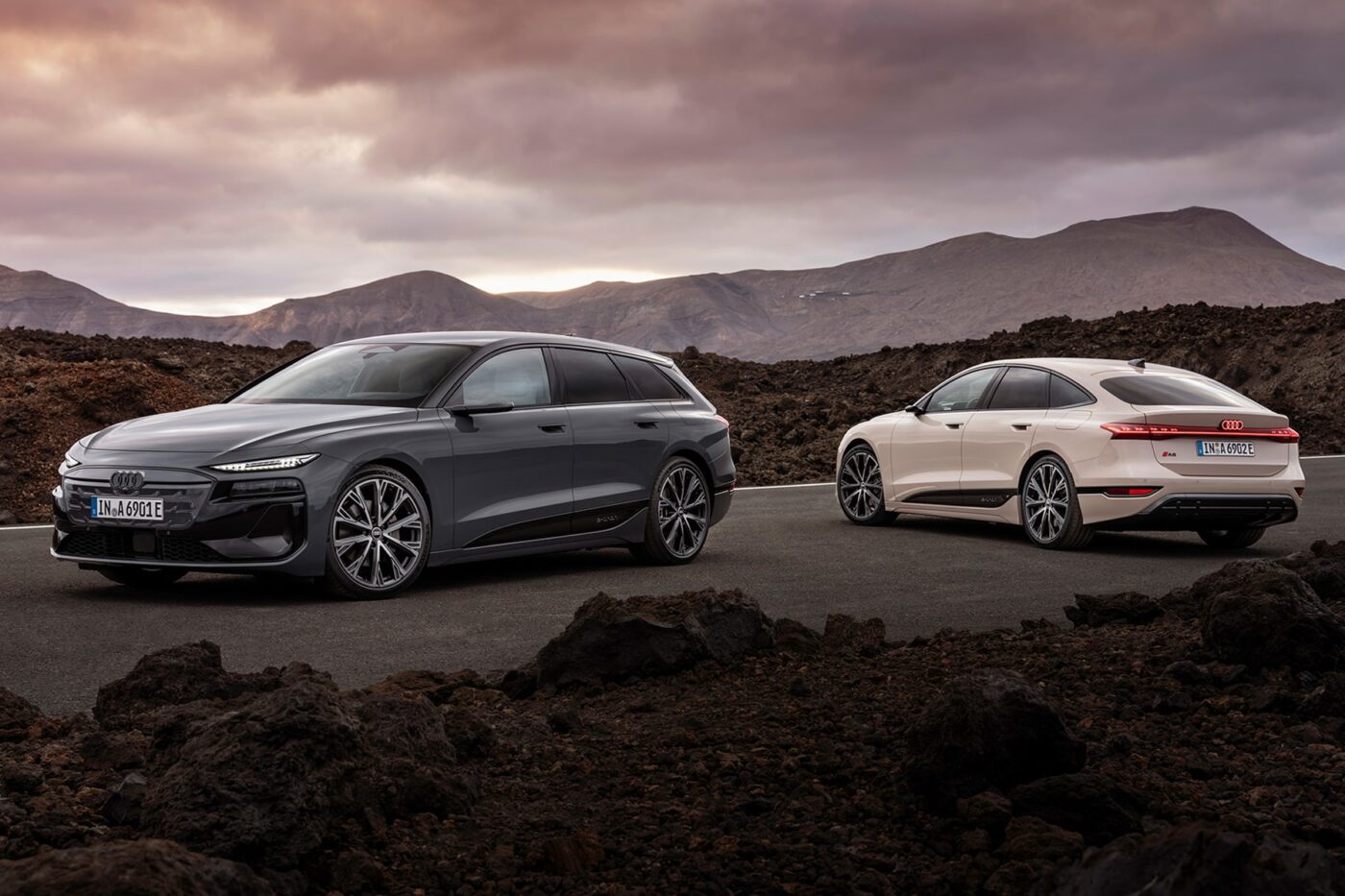
At the front, Audi uses air curtains to optimise the airflow. A new feature is a controllable cooling air intake under the Singleframe grille, which directs the airflow into or around the vehicle as required. There are also wheel spoilers and 3D bumpers in front of the front wheels, which are individually optimised for the Sportback and Avant, as well as covers for the rear axle and battery. The diffuser at the rear has also been optimised for “the optimum balance between rear axle lift and cw value,” according to Audi. Specially optimised wheel rims and the exterior mirror cameras familiar from the Q8 e-tron can also further reduce aerodynamic drag on the A6 e-tron.
In addition to aerodynamics, the design and utility value were also important when designing the body. Audi speaks of a “clean design” that “focuses on dynamism, elegance and progressiveness.” Overall, Audi designers looked to the familiar brand face of the Q6 e-tron: The LED daytime running lights are emphatically narrow and separated from the main headlights, and the Singleframe grille is completely closed and surrounded by a black mask. On the side, a black design element in the lower section of the doors symbolises the location of the important battery, as on other e-tron models. And at the rear, the new A6 is clearly recognisable as a current Audi – including a red illuminated brand logo.
In terms of the interior, the German manufacturer emphasises the size of the displays (11.9 inches for the cockpit display, 14.5 inches for the infotainment touchscreen and another 11.9 inches for the front passenger display), the further development of the second-generation head-up display and the “home-like ambience” of the interior, which is intended to offer an “embracing feeling of space” with “softwraps” (a design element that extends across the entire width of the vehicle from door to door) introduced in the Q6 e-tron. However, Audi still needs to specify the size of the boot, which is an important criterion, particularly for the Avant.
The new infotainment system uses Android Automotive OS as its operating system, although the look and menu navigation have been completely adapted to Audi’s logic. The advantages relate to content and updates via over-the-air updates. Third-party apps such as YouTube or Spotify are also accessible via the ‘Audi Application Store’. They can be integrated directly into the Audi system without going via the smartphone. There is also an ‘Audi assistant’ with access to ChatGPT so that “researched content can be read aloud and you can interact with the car in natural language” while driving. Only when the Audi system cannot answer general knowledge questions, for example, are they forwarded to ChatGPT. For drivers, this happens seamlessly, as all functions are integrated into the ‘Audi assistant.’
The new A6 generation also has consequences for production: Until now, the model (as a combustion engine and hybrid) has been built at the Neckarsulm plant. However, the electric PPE model with the A6 in its name will be built in Ingolstadt together with the Q6 e-tron. Audi will rename the next combustion engine generation in this size class the A7 – as it recently did with the A4 successor as, the A5. The even digits denote the electric models, while the odd digits represent the combustion models.
Update 10 September 2024
Audi has confirmed UK prices and specifications for the A6 e-tron and S6 e-tron. The electric vehicles start at £69,900 and £71,700, respectively, achieving a maximum range of up to 463 miles.
The A6 e-tron can accelerate from 0-62 mph (0-100 kph) in 5.4 seconds, while the S6 e-tron can manage the same in 3.9 seconds. Audi also writes that when conditions allow, the vehicles can drive maximum speeds of 130mph and 149mph, respectively.
Source: Info by e-mail (in German), audi.co.uk (update)

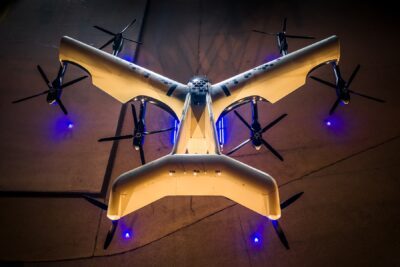
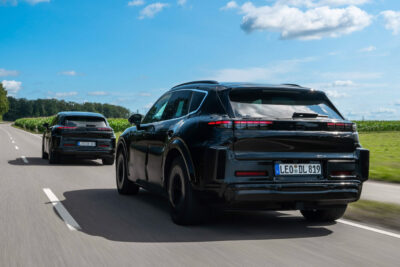

0 Comments